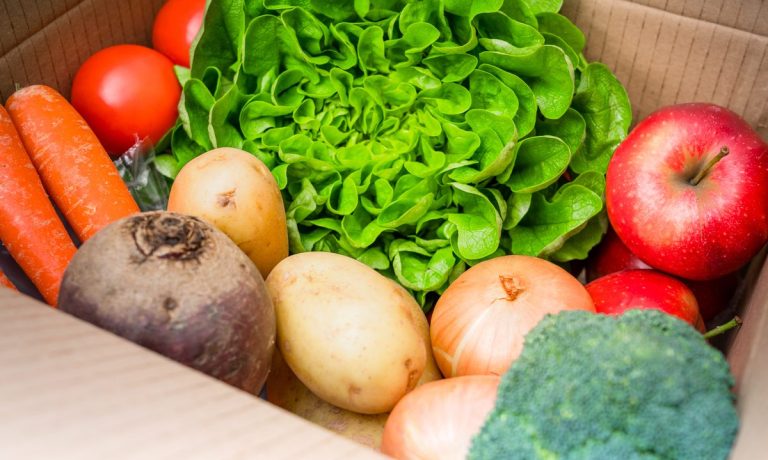
When it comes to online grocery, consumers have a wide range of options. They can order digitally from most leading brick-and-mortar grocers, order from a next-day digitally native online grocer or shop from one of the emerging ultrafast eGrocers promising delivery within 15 minutes, among other choices. Online grocers that find their niche with a specialized offering have the opportunity to find their audience, while those that do not risk falling behind.
Good Eggs, for one, a San Francisco, California-based online grocer and meal kit provider with a focus on local goods and sustainable products, announced last month that it has expanded its service beyond the Bay Area to Los Angeles.
Read more: Good Eggs Expands to Los Angeles
“LA is actually our first launch market since we reconfigured the company over the last five years,” Good Eggs Chief Growth, Product and CX Officer Vineet Mehra told PYMNTS in an interview. “We got our unit economics right in San Francisco, and now LA is our first push into a new market with our fulfillment-based model … We actually own our own inventory in a fulfillment center, [which] drives a much better customer experience, because we know exactly what we have available, and we don’t make a lot of mistakes when it gets to our customer.”
Raising the Bar
Eighteen percent of consumers now purchase groceries through digital channels more often than in stores, according to data from the PYMNTS study Decoding Customer Affinity: The Customer Loyalty to Merchants Survey 2022, created in collaboration with Toshiba Global Commerce Solutions, which drew from the results of a survey of a census-balanced panel of more than 2,000 U.S. consumers conducted in the late fall.
Get the full report: Decoding Consumer Affinity: The Customer Loyalty To Merchants Survey 2022
With the rise in eGrocery has come an increase in consumers’ expectations when they purchase online. Mehra says first-party fulfillment is key to fulfilling on this promise.
“One of the big emerging trends is, customers want a great experience online now that is at scale, and a first-party model where you own and run inventory is, I think, trend number one to … vertical integration of first-party models,” he said.
Meanwhile, eGrocers that are able to provide a high-quality experience have the advantage over brick-and-mortar brands when it comes to building consumer loyalty. The Decoding Customer Affinity study found that online grocery shoppers tend to be more loyal to their merchants than their in-store counterparts. In fact, eGrocery users are twice as likely to be loyal to a single merchant as those who shop in stores are, and digital shoppers are, conversely, significantly less likely to shop from three or more merchants.
Stand and Deliver
One of the greatest challenges for online grocers running a delivery-only business such as Good Eggs’ is that of unit economics.
However, Mehra said that the company has been able to make the channel work by specializing in larger-basket orders, with consumers’ first orders typically amounting to around $100, enabling per-order profits that would be much more difficult to attain with smaller purchases.
“That’s going to be a big challenge for a lot of companies at this scale,” he said. “I think that’s why you’re seeing a lot of online grocers trying to find new revenue streams — because they can’t make money off of the delivery itself.”
Instacart, for one, announced a partnership with advertising and communications company WPP last month to offer advertising solutions and analytics tools to consumer-packaged goods (CPG) brands on Instacart’s marketplace, enabling the grocery marketplace to bring in more revenue from the eyeballs on its platform. Meanwhile, Walmart, the world’s largest grocer, has been deriving more revenue from its delivery network by offering white-label fulfillment to smaller grocery brands.
Related news: Instacart Partners With WPP to Supplement Delivery Revenue With Ad Sales
Grocery Roundup: Walmart Takes on Instacart With New Tech Partnership
Additionally, Mehra said, Good Eggs is able to take advantage of its shorter supply chain to offer reliable fulfillment where others struggle more with ongoing shortages.
“Because we’re locally sourced, we don’t have these big supply chain problems,” he said. “I think a lot of companies are trying to adapt to the supply chain challenges but are almost too big to adapt because their supply chains have been entrenched for so long.”
A Need for Speed
As Good Eggs focuses on larger order sizes and smaller supply chains, Mehra expresses skepticism about the many ultrafast grocers looking to provide the quickest fulfillment.
Indeed, the cracks has begun to show in the ultrafast model in recent months. In late January, for instance, news broke that such grocers can lose as much as $20 on average per order, and in February, it was reported that an upcoming New York City bill would ban 15-minute delivery guarantees in the city where so many of these businesses have launched their services.
See also: Ultrafast Grocers’ Losses Mount in the Face of an Uncertain Future
Forthcoming NYC Bill Would Threaten Ultrafast Grocers
“Speed is good, but it’s hard to differentiate. It’s almost just a race to the bottom,” Mehra said. “I think for the vast majority of consumers, though they want it quickly, the hype around just speed as a differentiator is getting overblown.”